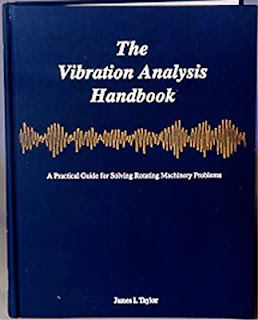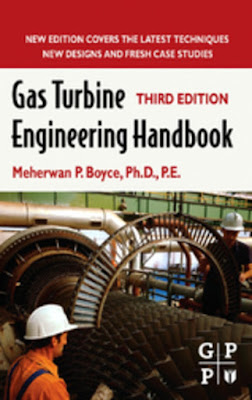THERMODYNAMICS- OBJECTIVE QUESTIONS
1. Which of the following variables controls
the physical properties of a per
(a) pressure
(a) pressure
(b) temperature
(c) volume
(d) all of the above
(e) atomic mass.
Ans: d
2. Which of the following laws is applicable
for the behavior of a perfect gas
(a) Boyle's law
(b) Charles'law
(c) Gay-Lussac law
(d) all of the above
(e) Joule's law.
Ans: d
3. The unit of temperature in S.I. units is
(a) Centigrade
(b) Celsius
(c) Fahrenheit
(d) Kelvin
(e) Rankine.
Ans: d
4. The unit of mass in S.I. units is
(a) kilogram
(b) gram
(c) tonne
(d) quintal
(e) newton.
Ans: a
5. The unit of time in S.I. units is
(a) second
(b) minute
(c) hour
(d) day
(e) year.
Ans: a
6. The unit of length in S.I. units is
(a) meter
(b) centimeter
(c) kilometer
(d) millimeter.
Ans: a
7. The unit of energy in S.I. units is
(a) watt
(b) joule
(c) joule/s
(d) joule/m
(e) joule m.
Ans: b
8. According to Gay-Lussac law for a perfect
gas, the absolute pressure of given mass varies directly as
(a)
temperature
(b)
absolute
(c) absolute temperature, if volume is kept
constant
(d) volume, if temperature is kept constant
(e) remains constant,if volume and
temperature are kept constant.
Ans: c
9. An ideal gas as compared to a real gas at
very high pressure occupies
(a)
more volume
(b)
less volume
(c) same volume
(d) unpredictable behaviour
(e) no such correlation.
Ans: a
10. General gas equation is
(a) PV=nRT
(b) PV=mRT
(d) PV = C
( c)
PV=KiRT
(e) Cp-Cv = Wj
Ans: b
11. According to Dalton's law, the total pres
sure of the mixture of gases is equal to
(a) greater of the partial pressures of all
(b) average of the partial pressures of all
(c) sum of the partial pressures of all
(d) sum of the partial pressures of all
divided by average molecular weight
(e) atmospheric pressure.
Ans: c
12. Which of the following can be regarded as
gas so that gas laws could be applicable,commonly encountered temperature
limits.
(a) 02, N2, steam, C02
(b) Oz, N2, water vapour
(c) S02, NH3, C02, moisture
(d) 02, N2, H2, air
(e) steam vapours, H2, C02.
Ans: d
13. The unit of pressure in S.I. units is
(a) kg/cm2
(b) mm of water column
(c) pascal
(d) dynes per square cm
(e) bars
Ans: c
14. A closed system is one in which
(a) mass does not cross boundaries of the
system, though energy may do s(b) mass crosses the boundary but not the energy
(c) neither mass nor energy crosses the
boundaries of the system
(d) both energy and mass cross the boundaries
of the system
(e) thermodynamic reactions take place.
Ans: a
15. Temperature of a gas is produced due to
(a) its heating value
(b) kinetic energy of molecules
(c) repulsion of molecules
(d) attraction of molecules
(e) surface tension of molecules.
Ans: b
16. According to kinetic theory of gases, the
absolute zero temperature is attained when
(a) volume of the gas is zero
(b) pressure of the gas is zero
(c) kinetic energy of the molecules is zero
(d) specific heat of gas is zero
(e) mass is zero.
Ans:
c
17. Kinetic theory of gases assumes that the collisions
between the molecules are
(a) perfectly elastic
(b) perfectly inelastic
(c) partly elastic
(d) partly inelastic
(e) partly elastic and partly inelastic.
Ans: a
18. The pressure'of a gas in terms of its
mean kinetic energy per unit volume E is equal to
(a) E/3
(b) E/2
(c) 3E/4
(d)2E/3
(e) 5E/4.
Ans: d
20. Superheated vapour behaves
(a) exactly as gas
(b) as steam
(c) as ordinary vapour
(d) approximately as a gas
(e) as average of gas and vapour.
Ans:
d
21. Absolute zero pressure will occur
(a) at sea level
(b) at the center of the earth
(c) when molecular momentum of the system
becomes zero
(d) under vacuum conditions
(e) at a temperature of - 273 °K
Ans: c
22. No liquid can exist as liquid at
(a) - 273 °K
(b) vacuum
(c) zero pressure
(d) centre of earth
(e) in space.
Ans: c
23. The unit of power in S.I. units is
(a) newton
(b) pascal
(c) erg
(d) watt
(e) joule.
Ans: d
25. Intensive property of a system is one
whose value
(a) depends on the mass of the system, like
volume
(b) does not depend on the mass of the
system, like temperature, pressure, etc.
(c) is not dependent on the path followed but
on the state
(d) is dependent on the path followed and not
on the state
(e) remains constant.
Ans:
b
27. Characteristic gas constant of a gas is
equal to
(a) C/Cv
(b) Cv/Cp
(c) Cp - Cv
(d) Cp + Cv
(e) Cp x Cv
Ans: c
28. The behaviour of gases can be fully
determined by
(a) 1 law
(b) 2 laws
(c) 3 laws
(d) 4 laws
Ans: d
29. The ratio of two specific heats of air is
equal to
(a) 0.17
(b) 0.24
(c) 0.1
(d) 1.41
(e) 2.71.
Ans: d
30. Boyle's law i.e. pV = constant is
applicable to gases under
(a) all ranges of pressures
(b) only small range of pressures
(c) high range of pressures
(d) steady change of pressures
(e) atmospheric conditions.
Ans: b
31. Which law states that the internal energy
of a gas is a function of temperature
(a) Charles' law
(b) Joule's law
(c) Regnault's law
(d) Boyle's law



Comments
Post a Comment